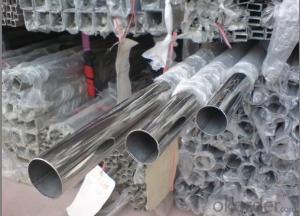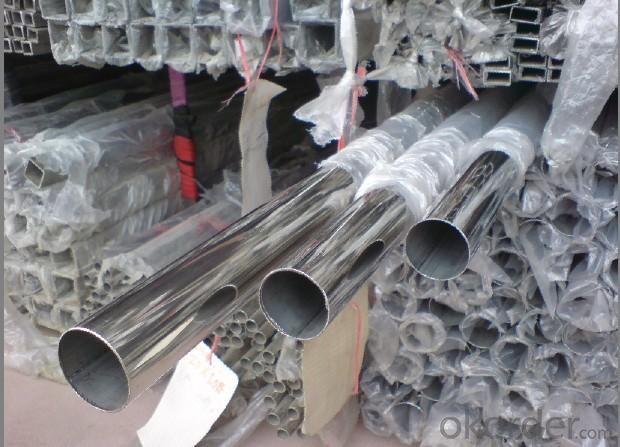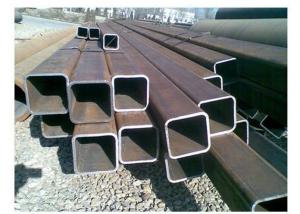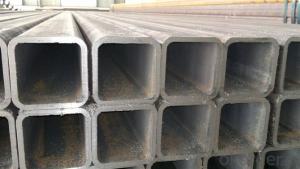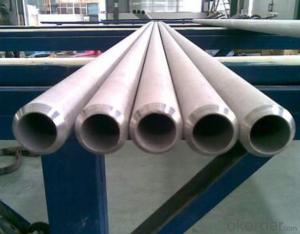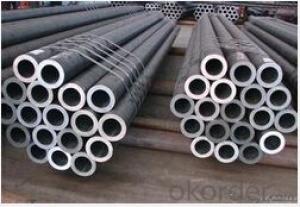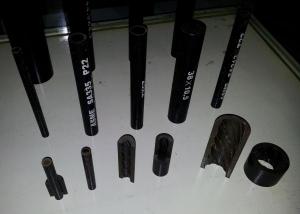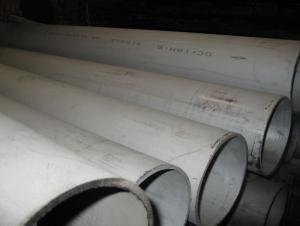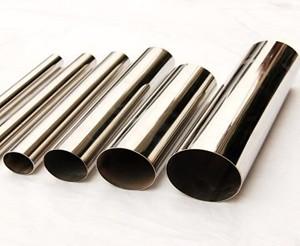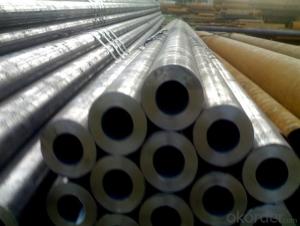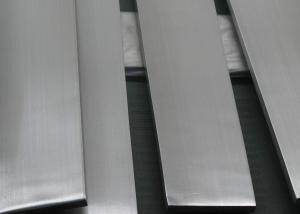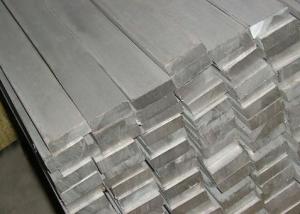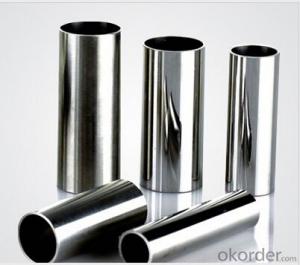Seamless Stainless Steel Tube Seamless Steel Pipe
- Loading Port:
- China Main Port
- Payment Terms:
- TT or LC
- Min Order Qty:
- 30 kg
- Supply Capability:
- 12000 kg/month
OKorder Service Pledge
OKorder Financial Service
You Might Also Like
1、Structure of Seamless Pipe ASTM A106/53:
Seamless pipe is formed by drawing a solid billet over a piercing rod to create the hollow shell. As the manufacturing process does not include any welding, seamless pipes are perceived to be stronger and more reliable. Historically seamless pipe was regarded as withstanding pressure better than other types, and was often more easily available than welded pipe.
Application
carbon seamless steel pipes are widely used in gas, water and oil, transpotation;constructions;Bridge,highway,windows of model steel door; building materials;fences;heating facilities Fluid Pipe;conduit pipe,scaffolding pipe.etc.
Payment Terms: L/C D/A D/P T/T
Packing and shipment
Packaged in bundles,as per customers' requirements, it can also bepackagesd as beveled ends, typed marking, black painting, plastic caps protection,woven bags packing
For 20" container the max length is 5.8m; For 40" container the max length is 12m. other options are available based on customer requests. Please discuss when placing orders.
2、Main Features of the Seamless Pipe ASTM A106/53:
• High manufacturing accuracy
• High strength
• Small inertia resistance
• Strong heat dissipation ability
• Good visual effect
• Reasonable price
3、Seamless Pipe ASTM A106/53 Specification:
Standard | GB, DIN, ASTM ASTM A106-2006, ASTM A53-2007 |
Grade | 10#-45#, 16Mn 10#, 20#, 45#, 16Mn |
Thickness | 8 - 33 mm |
Section Shape | Round |
Outer Diameter | 133 - 219 mm |
Place of Origin | Shandong, China (Mainland) |
Secondary Or Not | Non-secondary |
Application | Hydraulic Pipe |
Technique | Cold Drawn |
Certification | API |
Surface Treatment | factory state or painted black |
Special Pipe | API Pipe |
Alloy Or Not | Non-alloy |
Length | 5-12M |
Outer Diameter | 21.3-610mm |
Grade | 20#, 45#, Q345, API J55, API K55, API L80, API N80, API P110, A53B |
Standard | ASME, ASTM |
1) Material:20#(ASTM A 106/A53 GRB.API5LGRB,GB),45#,16Mn,10#.
2) Specification range:OD:21.3-610mm,WT:6-70mm,length:6-12m or according to the requirement of clients.
3) Excutive standards:GB,ASME API5L.ASTM A 106/A53,Despite of the above standards,we can also supply seamless steel pipe with standard of DIN,JIS,and so on,and also develop new products according to the requirements of our clients!
4) Surface:black lacquered,varnish coating or galvanized.
5) Ends:Beveled or square cut,plastic capped,painted.
6) Packing:bundles wrapped with strong steel strip,seaworthy packing.
4、Packaging & Delivery
Packaging Details: | seaworthy package,bundles wrapped with strong steel strip |
Delivery Detail: | 15-30days after received 30%TT |
5、FAQ of Seamless Pipe ASTM A106/53:
①How is the quality of your products?
Our products are manufactured strictly according to national and internaional standard, and we take a test
on every pipe before delivered out. If you want see our quality certifications and all kinds of testing report, please just ask us for it.
Guaranteed: If products’ quality don’t accord to discription as we give or the promise before you place order, we promise 100% refund.
②How about price?
Yes, we are factory and be able to give you lowest price below market one, and we have a policy that “ for saving time and absolutely honest business attitude, we quote as lowest as possible for any customer, and discount can be given according to quantity”,if you like bargain and factory price is not low enough as you think, just don’t waste your time.Please trust the quotation we would give you, it is professional one.
③Why should you chose us?
Chose happens because of quality, then price, We can give you both.Additionally, we can also offer professional products inquiry, products knowledge train(for agents), smooth goods delivery, exellent customer solution proposals.Our service formula: good quality+good price+good service=customer’s trust
SGS test is available, customer inspection before shipping is welcome, third party inspection is no problem.
6、Seamless Pipe ASTM A106/53 Images:
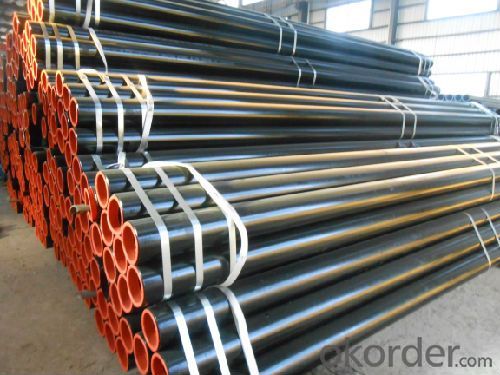
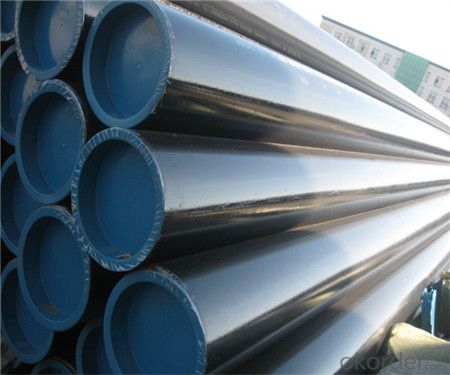
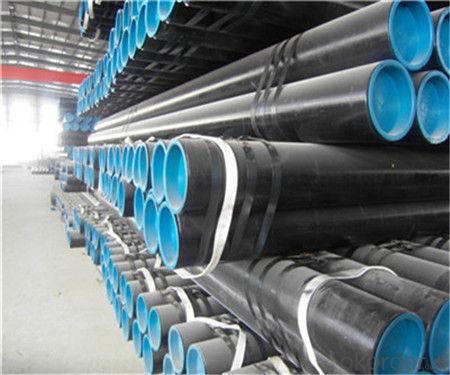
- Q: Can stainless steel pipes be used for desalination systems?
- Yes, stainless steel pipes can be used for desalination systems. Stainless steel is highly resistant to corrosion and can withstand the harsh conditions involved in desalination processes, such as high salinity and the presence of chemicals. Its durability and resistance to corrosion make it an ideal material choice for transporting and distributing desalinated water.
- Q: Stainless steel why rust?
- The surface of stainless steel deposited dust or heterogeneous metal particles containing other metal elements of the attachment, in the humid air, condensed water and adhesion between the stainless steel, the two together into a micro battery, causing the electrochemical reaction, the film has been destroyed, called electrochemical corrosion.
- Q: What is the difference between seamless and hot-expanded stainless steel pipes?
- Two distinct methods exist for manufacturing stainless steel pipes: seamless and hot expansion. Seamless stainless steel pipes are formed by piercing a solid billet of stainless steel and rolling it into the desired pipe shape. In this process, there is no welding or joining of separate pieces, resulting in a seamless pipe. These pipes are renowned for their uniformity and strength, as they lack weak points or potential leak paths. Although more expensive to produce, they are essential in applications requiring high corrosion resistance and pressure handling, such as in the oil and gas industry or high-pressure boilers. Conversely, hot-expanded stainless steel pipes are created by heating a stainless steel pipe and expanding it to a larger diameter using a mandrel within the pipe. This method is employed to produce larger diameter pipes for specific purposes. The hot expansion process can enhance the mechanical properties of the pipe, including increased tensile strength and improved corrosion resistance. Industries such as petrochemical, power generation, and construction frequently employ these pipes. In conclusion, the key distinction between seamless and hot-expanded stainless steel pipes lies in their manufacturing processes and resulting properties. Seamless pipes are crafted by rolling a solid billet, while hot-expanded pipes are formed by heating and expanding an existing pipe. Seamless pipes are recognized for their strength and uniformity, while hot-expanded pipes are often utilized for larger diameter applications and can possess enhanced mechanical properties.
- Q: Can stainless steel pipes be used for high-pressure applications?
- Indeed, high-pressure applications can utilize stainless steel pipes. Renowned for their exceptional corrosion resistance, strength, and durability, stainless steel proves to be a fitting choice for managing high-pressure fluids or gases. Without succumbing to deformation or leakage, stainless steel pipes endure immense pressures, guaranteeing the secure and effective transportation of fluids across diverse industries such as oil and gas, chemical processing, and power generation. Moreover, their ability to withstand extreme temperatures further amplifies their aptness for high-pressure applications.
- Q: Where is the difference between seamless steel pipe and welded pipe?
- Pipe classification: steel pipe seamless steel pipe and welded steel pipe (tube) two categories. It can be divided into round tube and special-shaped tube according to the sectional shape. The round steel tube is widely used, but there are some special-shaped steel tubes such as square, rectangle, semicircle, hexagon, equilateral triangle and octagon.
- Q: What is the thermal conductivity of stainless steel pipes?
- The thermal conductivity of stainless steel pipes varies depending on the specific grade of stainless steel being used. However, on average, stainless steel pipes have a thermal conductivity ranging from 15 to 24 W/m·K (watts per meter kelvin).
- Q: What is the weight of stainless steel pipes?
- The weight of stainless steel pipes may differ based on factors such as their length, diameter, and wall thickness. Due to its high density, stainless steel pipes generally have a greater weight in comparison to pipes manufactured from alternative materials. Typically, the weight of stainless steel pipes is quantified in kilograms or pounds per meter or per foot. It is crucial to acknowledge that the weight can vary depending on the particular grade of stainless steel employed during the pipe fabrication process.
- Q: Can stainless steel pipes be used for sewage pumping stations?
- Yes, stainless steel pipes can be used for sewage pumping stations. Stainless steel is highly resistant to corrosion and can withstand the harsh conditions and chemicals present in sewage. Additionally, stainless steel pipes offer excellent durability and longevity, making them suitable for use in sewage pumping stations.
- Q: What is the typical wall thickness for stainless steel pipes?
- The typical wall thickness for stainless steel pipes can vary depending on the application and specific requirements. However, in general, stainless steel pipes are available in a wide range of wall thicknesses. For most standard applications, such as plumbing or industrial use, the typical wall thickness for stainless steel pipes can range from Schedule 5S (0.049 inches or 1.24 mm) to Schedule 80S (0.218 inches or 5.54 mm). It is important to note that for specialized applications or projects with specific requirements, the wall thickness can be customized accordingly. Overall, the selection of the appropriate wall thickness for stainless steel pipes should be based on factors such as the intended use, pressure requirements, and structural considerations.
- Q: What are the cost considerations for stainless steel pipes?
- The cost considerations for stainless steel pipes include the initial purchase price, installation costs, maintenance expenses, and potential long-term savings due to their durability and corrosion resistance. Additionally, factors such as the grade, size, and quantity of pipes needed and any additional fabrication or customization requirements can also impact the overall cost.
Send your message to us
Seamless Stainless Steel Tube Seamless Steel Pipe
- Loading Port:
- China Main Port
- Payment Terms:
- TT or LC
- Min Order Qty:
- 30 kg
- Supply Capability:
- 12000 kg/month
OKorder Service Pledge
OKorder Financial Service
Similar products
Hot products
Hot Searches
Related keywords
